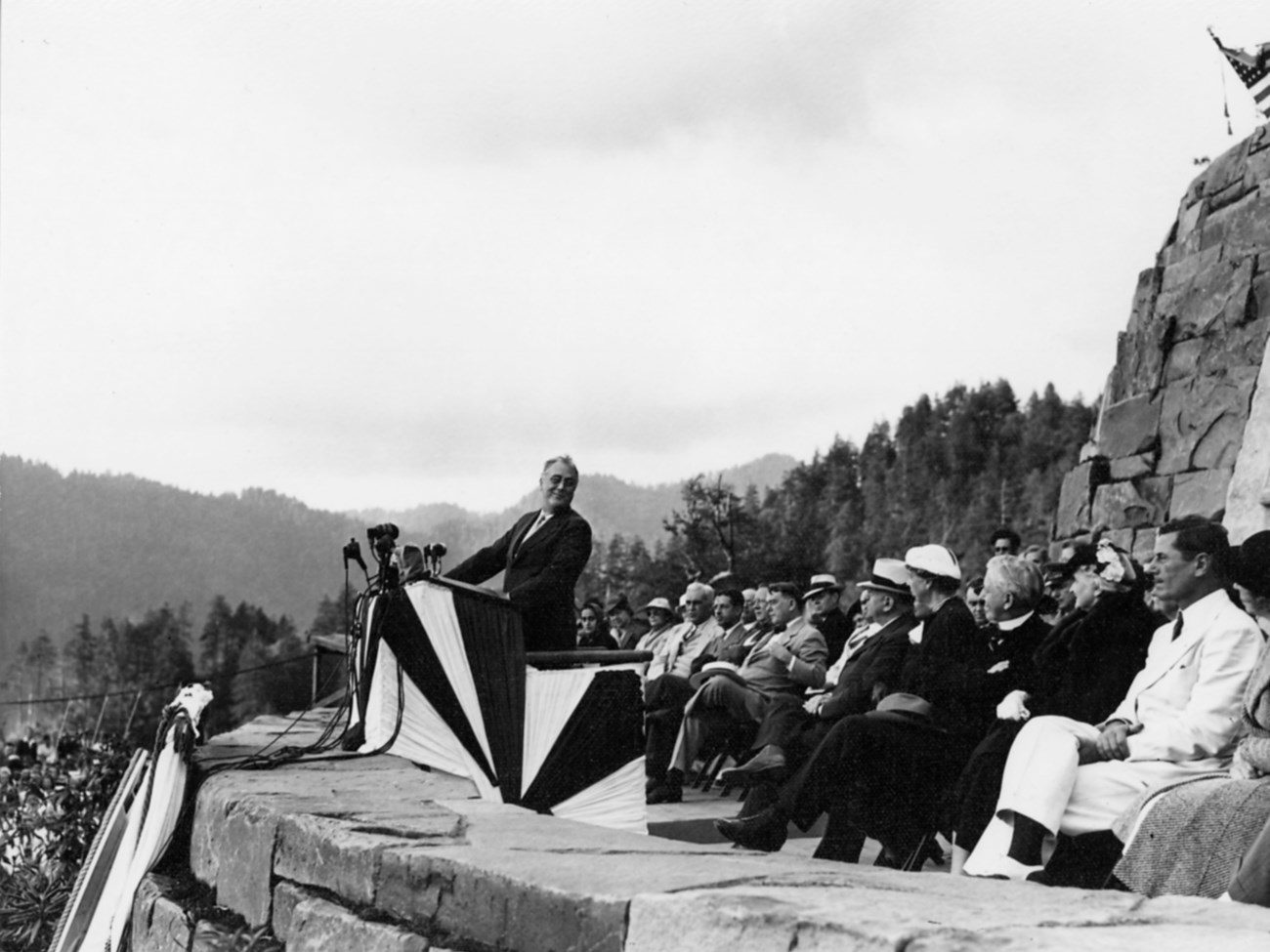Last updated: November 5, 2020
Article
FDR's Conservation Legacy

NPS
The land surrounding FDR's home at Hyde Park nurtured a life-long interest in nature and the environment. He first drew substance from this land as a young boy riding horseback with his father. FDR's conservation ethic took root and flourished during a lifetime of exploring and caring for the place where, in 1912, he began to practice scientific forest management. He would plant half a million trees in Hyde Park during his lifetime—work conducted in cooperation with the State University of New York College of Science and Forestry at Syracuse.
His cousin, Theodore Roosevelt (TR), was an early influence. FDR's political career, which mirrored TR's, also paralleled his maturing interest in conservation.
As a young politician, FDR was becoming a leader in conservation. As chair of the New York State Senate's Forest, Fish and Game Committee he introduced eight bills addressing conservation, including the Roosevelt-Jones Bill to regulate timber harvests on private land. To garner support for his bill, FDR invited the first Chief of the U.S. Forest Service, Gifford Pinchot, to address the New York State Assembly. Pinchot's illustrated talk, depicting the denuding of a Chinese forest and the threats of a "timber famine" was a pivotal moment in FDR's growth as a conservationist.
All in a Name
No two Presidents have had more influence over the protection of our nation's natural resources than Theodore and Franklin Roosevelt. Both championed the nation's first widespread conservation efforts.
Theodore Roosevelt created the United States Forest Service, established 150 national forests, 51 federal bird reserves, 4 national game preserves, 5 national parks, and 18 national monuments by enabling the 1906 American Antiquities Act. He protected approximately 230 million acres of public land during his presidency.
Building upon TR's legacy, FDR created the Civilian Conservation Corps, reorganized and expanded the National Park Service, and fostered numerous acts and legislation protecting the environment, providing a basis for future conservation.
The Conservation Governor
As governor of New York, FDR cited the benefits of forests during a radio address on March 31, 1930. "They protect the head waters of our rivers and streams, they prevent the too rapid run-off of rain and melting snow and tend to equalize the flow of streams. They return to the land more than they take from it and maintain its fertility."
FDR supported the 1931 Hewitt Reforestation Amendment to the New York Constitution which resulted in planting tree seedlings on thousands of acres of abandoned farmland with depleted soils and significant erosion.
In August 1931, FDR used the Temporary Emergency Relief Administration (TERA) to put unemployed men to work on conservation projects. Over 10,000 men built fire roads, fought soil erosion, and planted seedlings on the marginal farmlands purchased through the Hewitt Amendment. Successful at the state level, TERA became a model for the Civilian Conservation Corps (CCC).
A New Deal for Conservation
On April 5, 1933, one month after FDR became President, he signed Executive Order 6101 (Emergency Conservation Work Act) creating the Civilian Conservation Corps (CCC). This act addressed two pressing needs, unemployment and the repair of environmental damage, with one of the most successful New Deal programs.
Employing three million men over nine years, the CCC played a critical role in FDR's strategy to conserve land and natural resources and raised public awareness of the outdoors and the importance of natural resource preservation.
Across the nation, the CCC planted three billion trees, built campgrounds and trails, removed invasive plants, improved wildlife habitats, and fought tree-killing insects. They also preserved historic sites, built roads, bridges, and dams. Forty million acres of farmlands benefited from erosion control projects, 154 million square yards of stream and lake shores were protected, 814,000 acres of range were revegetated, and stocked 972 million fish were stocked.
FDR's National Park Vision
Conservation and preservation often go hand in hand. FDR protected many unique areas across the country. When created in 1916, the National Park Service focused primarily on the conservation of spectacular landscapes, mostly in the West, and prehistoric native sites. FDR expanded the National Park Service mission in 1933 to include not only parks and monuments but also national cemeteries, national memorials, and national military parks. He also added the parks in Washington, D.C. The reorganization paved the way for inclusion of historic sites such as the Vanderbilt Mansion and FDR's own home, which he made part of the national park system in 1939 and 1943. With sweeping legislation, FDR was responsible for adding over one-quarter of the 411 areas in today's National Park Service system.
Equally important, the 1933 reorganization introduced new regions of the country to the National Park Service. FDR diversified the definition of national treasures. As he saw it, history, culture, and nature all played roles in the exceptional saga and unfolding legacy of the United States. "There is nothing so American," he said, "as our national parks."
A Conservation Legacy
Franklin Roosevelt's New Deal programs, combined with his enthusiasm for conservation, laid a firm foundation for protecting the nation's natural bounty. The extent of the conservation projects carried on during the New Deal was far more reaching than anything attempted before. Soil erosion control, water conservation, the preservation of wildlife, and other environmental protection activities became a part of the everyday life and activities of American citizens. The importance of the work was new and inspiring. Under his leadership, FDR's programs introduced new concepts on a national level in planning for the responsible use of our natural and historic resources.
FDR left a conservation legacy essential to a healthy 21st-century environment—one that we continue to build upon today.
